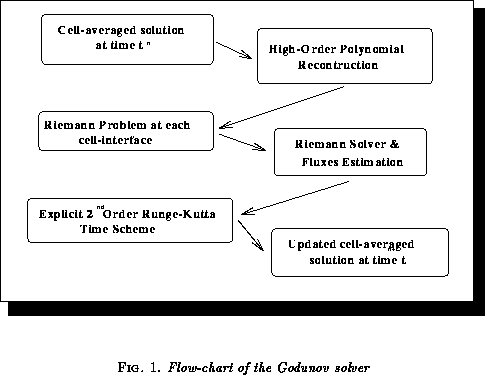



This section will explain how you can build a numerical discretization of the Euler equations, in a method-of-lines spirit, that is discretizing separately the equations in time and space.
The key points are:
The MUSCL-TVD interpolation formula advised by van Leer6.3
provide a one parameter family of
second-order scheme and one third-order scheme. You can directly select the second-order
Fully Upwind scheme or the third-order one called Upwind Biased.
The time-marching is achieved by applying a  order two-stage Runge Kutta method,
Shu, 1987.
order two-stage Runge Kutta method,
Shu, 1987.
Coupling a TVD or ENO interpolation-reconstruction technique with an appropriate Riemann solver, as said above, yields a high-order accurate scheme which numerically captures discontinuities in a sharp way avoiding unrealistic oscillations.
A first-order, upwind scheme has good properties of monotonicity, so you can use it without limiters in the discretization, but it suffers from severe inaccuracies because of the high level of truncation error.
A high-order, accurate scheme generally gives discretizations with a low-level of numerical dissipation, but steep gradients may produce oscillating behaviour due to the numerical dispersion of the scheme. Higher-order upwind schemes have been shown to optimize the distribution of the artificial dissipation reducing it in the smooth regions and to minimize the numerical dispersion.